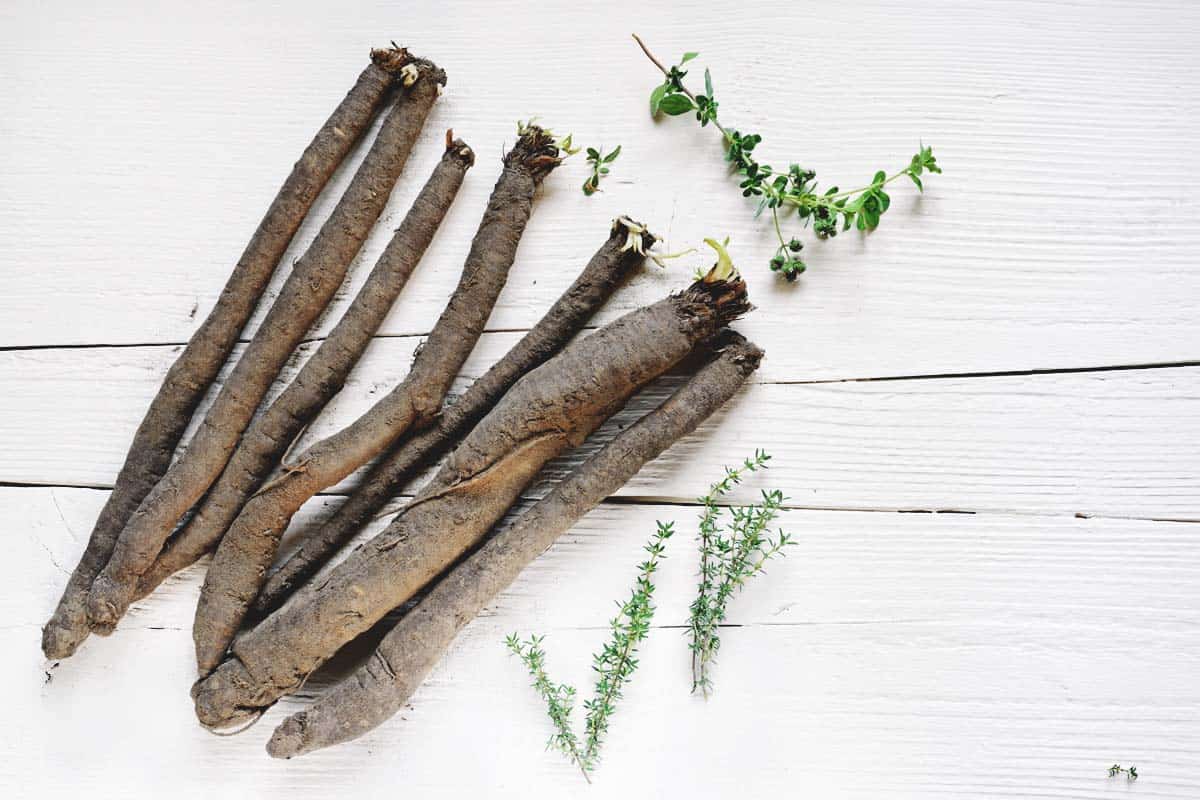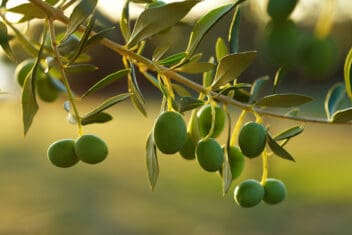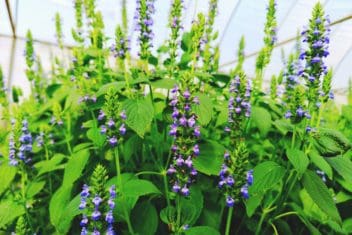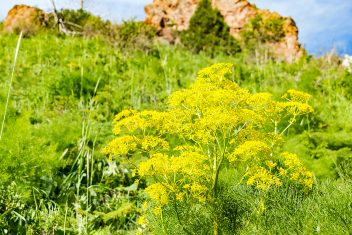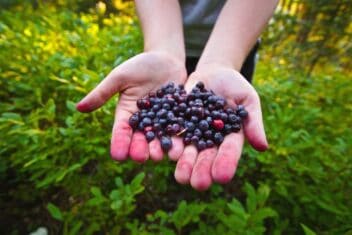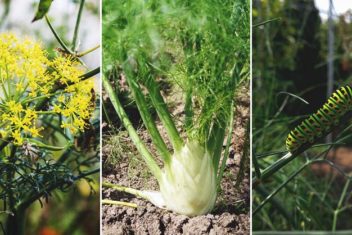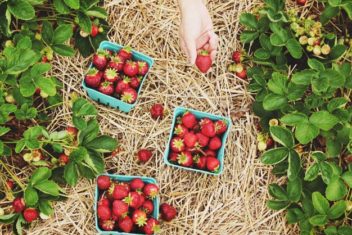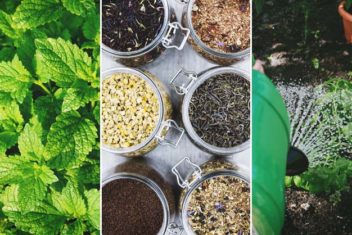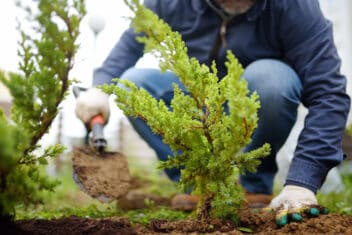Imagine a parsnip and a dandelion root had a baby that looked like a brown stick. That’s salsify. Unlike beets, sweet potatoes, onions, and parsnips, salsify is a lesser-known root vegetable. It shouldn’t be – it’s totally worth growing.
Sometimes called oyster plant because of its vaguely seafood-like flavor, salsify is a long, slender taproot with white, creamy flesh. It has lovely purple edible flowers.
It’s versatile and tasty and lends itself to soups and stews, and can be mashed like a potato with butter and cream.
Like most root vegetables, it’s a reliable crop, although you have to have some patience to make it happen.
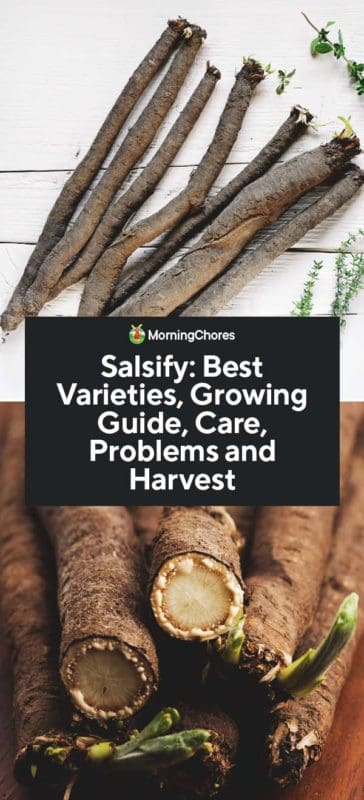
Varieties of Salsify
Salsify comes in two types: black and white. Black salsify has smooth, nearly black skin. White salsify has textured brown or tan skin.
The two most common varieties are Sandwich Island and Giant Russian. Most bespoke seed sellers and farmer’s markets have salsify seeds and some of the mainstream sellers are beginning to stock them as well.
Sandwich Island

I highly recommend this variety. It’s reliable and probably the easiest type to find. Sandwich Island looks like white carrots with long, tapered taproots. The leaves are edible – especially when young. It takes about 120 days to mature.
When I’ve seen salsify in supermarkets and at farmer’s markets, it’s generally the Sandwich Island variety.
Giant Russian
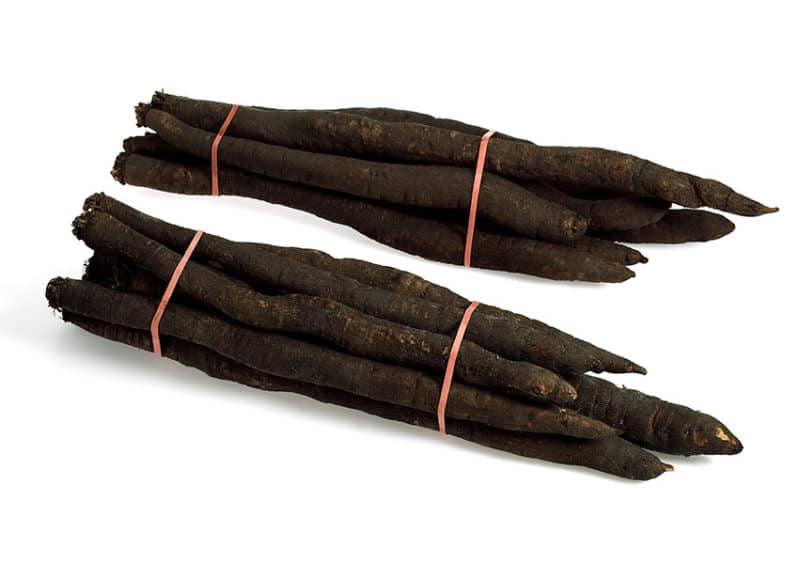
This is a black salsify variety that is long and narrow. The skin is black, but underneath, the flesh is white and creamy. Harvested in the fall after all frosts have passed, this is a lovely sweet variety.
The downside is that Giant Russian gets quite big and tough if left too long in the ground.
How to Grow Salsify
Plant ten salsify per person in your household. This ensures a consistent supply throughout the season and I guarantee once your family tries it, you’ll need them all.
Salsify has beautiful purple, yellow or white flowers that add cheerful color to the garden, which is why I like to plant it where I can see it growing.
Growing Zones
Give growing salsify a go in zones 1 to 10.
Sun Requirements
Plant salsify in full sun. It’s a cool weather plant, so if the sun is too harsh where you live, consider a shade cloth or planting partial sun. In cooler areas, full sun is ideal.
Soil Requirements
Loamy soil with a pH of 6.0 to 6.8 is preferable. Dig in well-rotted organic matter to a depth of 12 inches or more. Ensure you remove big, hard clumps and stones. The last thing you want your salsify to do is hit a stone and split.
When to Plant
You can plant salsify seeds about two weeks before the last expected frost in spring for fall harvest. Make sure the soil temperature is at least 40°F.
If you live in an area with mild winters, plant salsify in early fall for a winter harvest. Salsify needs up to 150 days for harvest and is better tasting if it matures in winter.
Use the freshest seeds you can. One thing I find with salsify is the seeds lose viability quickly and germination becomes less consistent, much like parsnips.
Spacing
Plant seeds about 1/2 an inch deep and 4 inches apart with 18-inches between rows. You can plant closer and thin the seeds out later to ensure a good number of germinations.
Caring for Salsify
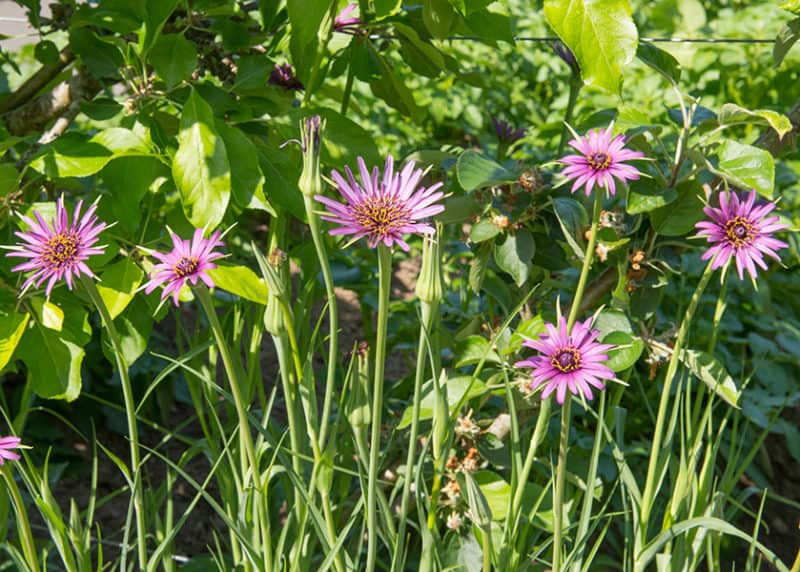
Fertilizer
Make sure you have a well-balanced soil mixture before planting. Too much nitrogen in the soil can cause the root to split in half or fork.
Use a well-balanced fertilizer as a side dressing midseason. Avoid nitrogen-heavy fertilizers like manure.
Water
Keep salsify evenly watered through the season. If it gets too dry the root becomes fibrous.
Weeding
Keep the area weed-free as much as possible. Salsify is a slow grower and weeds will outgrow it and steal the nutrients.
Mulch
Add a good, thick layer of mulch to help retain moisture in drier areas.
Companion Planting for Salsify
Grow salsify with:
- Carrots
- Turnips
- Potatoes
- Swedes
- Sweet Potatoes
- Parsnips
- Beans
- Lettuce
- Leeks
- Spinach
- Cabbage
- Cauliflower
- Endive
- Kohlrabi
- Rutabaga
Don’t grow it with pumpkins or mustard.
Common Problems and Solutions for Salsify
For a plant that is in the ground for up to 150 days, salsify is relatively disease-free, but you need to watch out for pests. I’ve found salsify suffers from the same issues as carrots. Watch out, deer and birds enjoy snacking on salsify.
Like most plants, salsify does well when you practice good soil hygiene and crop rotation.
White Blister
If you have this fungus, little white blisters form on the leaves and stunt the growth of your plant. Remove the infected leaves and burn or throw in the garbage – don’t put them in the compost bin. To avoid it, rotate your crops and keep weeds far away.
Carrot Rust Fly
The adult carrot rust fly lays its eggs in the soil and when the salsify pushes through, the larvae burrow into the top of the root. When you harvest it, you’ll find rust-colored tunnels in the root.
Use row covers and plant with marigolds to deter the fly. Harvest promptly if you have rust flies in the garden and clear the garden in the winter.
Root Knot Nematodes
Root knot nematodes cause forked roots and irregular bumps on growing salsify. Practice good crop rotation and be sure your salsify seeds are resistant to this problem before planting.
Soft Rot
Soft rot is caused by bacteria that can destroy root crops. You’ll usually see tan or cream flesh surrounded by a dark brown ring on the salsify root.
Soft rot is everywhere and it enters through damage in the flesh of the plant. If your plants are impacted, there’s no cure. Pull them and plant a different crop in the area for a few years.
To prevent it, plant certified disease-free seed, avoid overwatering, keep your garden tools cleans, and be careful not to damage the flesh of your plants while you’re working in the garden.
Wireworms
Wireworms are the larvae of click beetles that attack tubers and roots. They’re about 1 inch long with three sets of legs behind their heads. They can destroy an entire crop if not managed.
Practice good crop rotation and be sure to cultivate the top 8 inches of your soil to make your garden unappealing to them. You can also use beneficial nematodes and drench the soil in pyrethrin.
Aphids
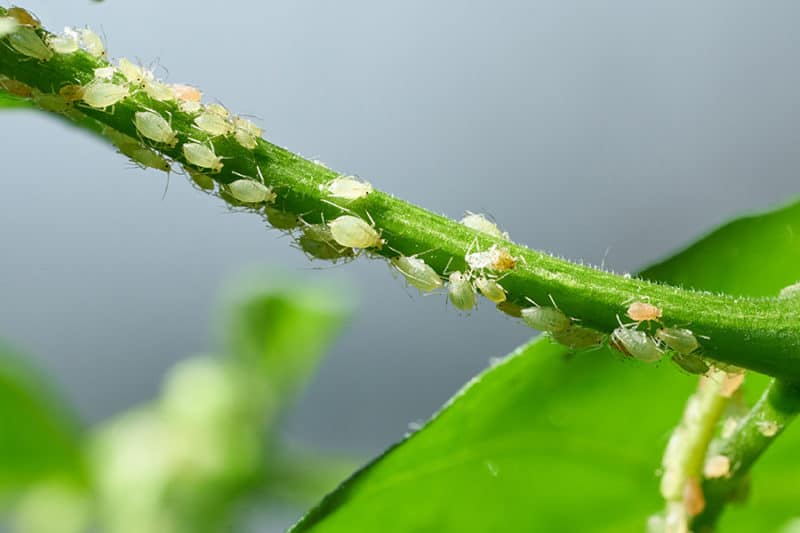
There are few plants out there that aphids won’t attack. Our guide will give you the best tactics for tackling the problem.
Japanese Beetle
Japanese beetles are pretty – but they’re also a giant pest. They have an iridescent shell and typically emerge from the soil and start feeding in June. You’ll notice your plants rapidly becoming skeletonized.
You can prevent them by using row covers during their feeding period, which varies depending on the region. If you find them on your plants, the best way to control them is to handpick them and drown them in water with dish soap. You can also put a dropcloth on the ground and shake the plants to dislodge the beetles.
Slugs
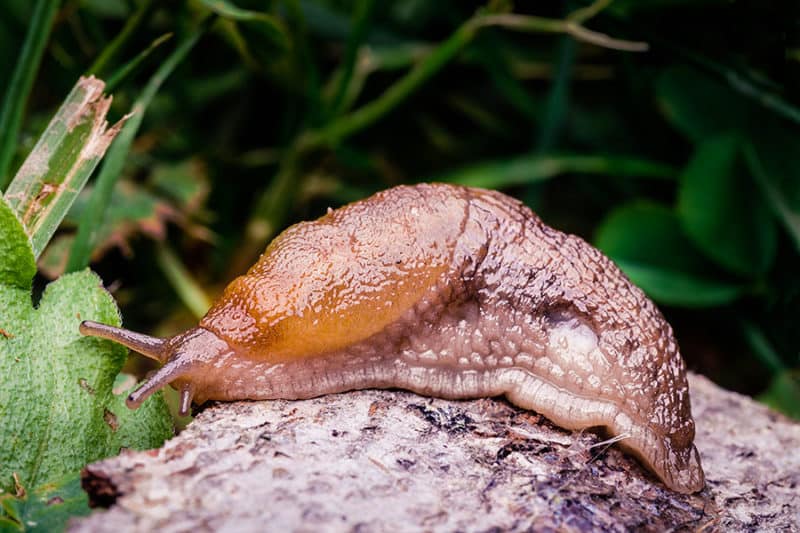
Slugs and snails love salsify. Use a pet and child-safe snail bait to control them.
Carrot Weevil
Carrot weevils, as the name suggests, adore dining on growing salsify leaves. They’re brownish snout beetles that overwinter in areas where carrots and salsify grow.
Once the adults emerge in the late spring, they nibble on the edge of plant leaves. The real problem is the larvae, which devour the roots.
Parasitic nematodes are the first line of defense. You should also keep weeds away and clean up garden beds in the winter. Diatomaceous earth is also helpful when you spread it around plants.
Leafminers
Leafminers chew tunnels through the leaves of plants, which can weaken them. Beneficial bugs like parasitic wasps are the best way to tackle a leafminer infestation. You can also use a regular application of neem oil. If all else fails, spray plants with a pesticide.
Harvesting and Storing Salsify
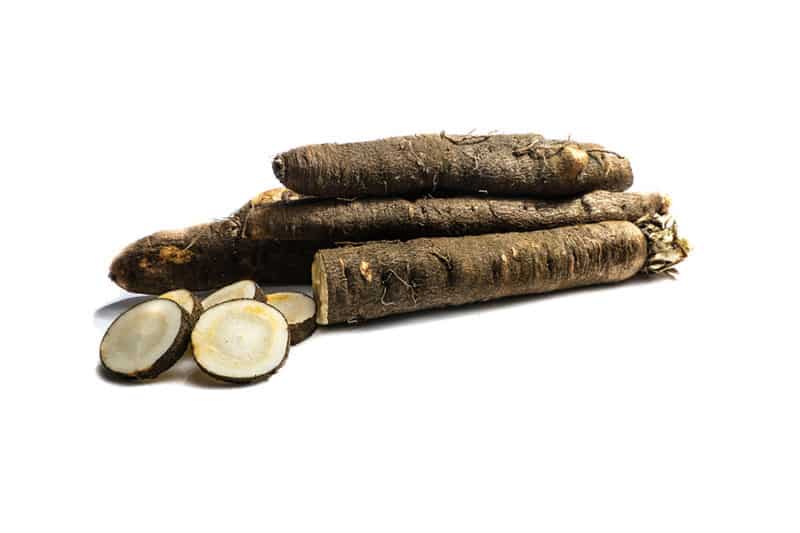
Salsify is ready for harvest when it’s about 12 inches in length. This can be anywhere between 120 and 150 days depending on the variety.
The roots grow deep and you don’t want to damage them when removing them. Salsify won’t store well if damaged.
Use a fork and dig down and beside the root as best you can. Lift it gently from the soil. Store it in a cool dry place for two weeks to allow it to dry.
If you harvest in the fall, leave the salsify in the ground until it’s been through a couple of frosts. This makes the root sweeter.
Storing
Store salsify in the refrigerator for up to 4 weeks. Keep an eye on it and if the root starts to get a bit soft, its best to use it.
If you have a cool dry place like a root cellar, salsify will store for between 2 and 4 months.
Cooking with Salsify
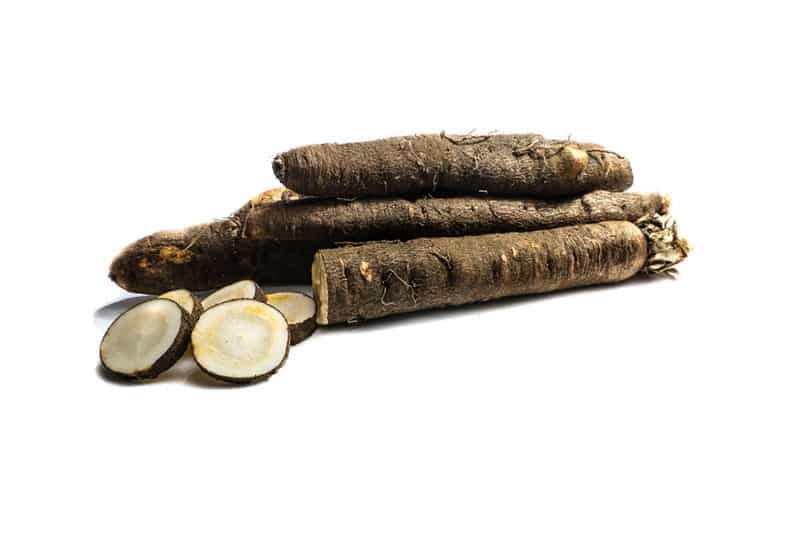
Salsify is versatile in the kitchen. I’ve used it to make soup, added it to stews and casseroles, mashed it with cream and butter like potatoes, roasted it and used the young leaves in salads and sautéed them in a pan with butter.
I’ve even grated salsify raw into salads much like young beets.
This salsify bisque recipe is particularly tasty.
The Bottom Line
Salsify is a great root vegetable for both beginners and experienced gardeners. You can’t go wrong and if you’re patient enough, it will reward you with a unique tasting and fun to grow vegetable.
If you discovery any secrets when it comes to growing salsify, we’d love for you to share them with us.
